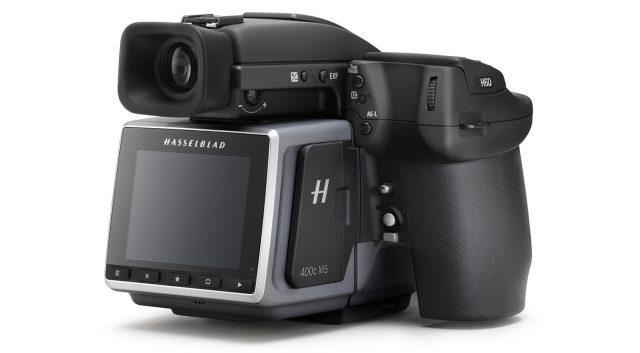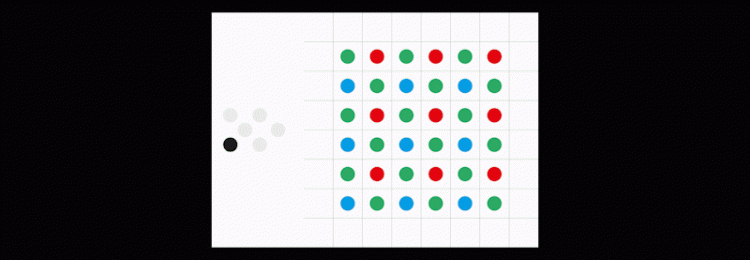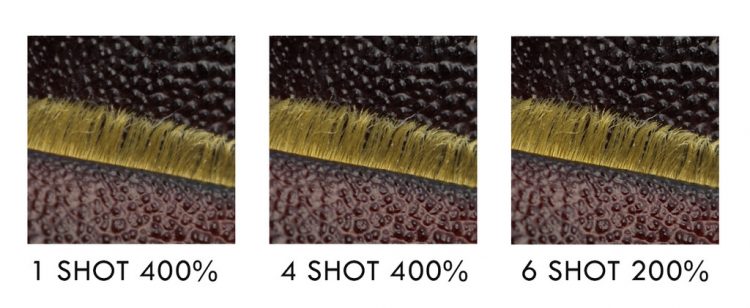Hasselblad Soups Up Its 100MP H6D With 400MP Multi-Shot Version

Recently it seems like smartphones have been having all the fun when it comes to computational imaging tricks. Portrait mode, bokeh, and synthetic telephoto are all the rage. But high-end camera maker Hasselblad doesn’t want to be left out. Its new H6D-400C MS is a multi-shot version of the H6D that couples the company’s 100MP sensor with a camera body that can slightly shift the sensor and lens mount, enabling advanced multi-capture modes that improve color and increase resolution. A six-shot mode provides both a cleaner image and resolution up to 400MP, while a four-shot mode provides a higher-quality 100MP image.
Hasselblad’s Answer to Phase One’s Trichromatic?
By moving the sensor a single pixel in each direction between the first four shots, the new camera can directly capture Red, Green, and Blue at every location, instead of interpolating two of the three colors at each pixel, like you get from a single capture with a typical Bayer array sensor. That should provide cleaner colors if the alignment and software combined are accurate enough to pull it off. The process obviously requires a very stable shooting platform, and doesn’t allow for any subject motion or any other motion of the camera.
Competitor Phase One has taken a different approach to getting cleaner color, by producing a re-designed set of color filters for its IQ3 100MP Trichromatic. By providing more separation between colors, Phase One claims it has greatly improved the final image. Phase One’s approach has the advantage of not requiring multiple exposures, but until the H6D-400 is available for side by side comparisons, we won’t know which system is more effective for studio shooting.
Super-Resolution Using Pixel Shifting
Pixel shifting to attain more resolution isn’t new. In fact, a number of 4K projectors on the market are actually 1080p projectors that project four frames each shifted 1/2 pixel. But the H6D-400 takes it to something of an extreme on the capture side. In addition to the four images it takes to create better color with lower noise, it takes two more offset by 1/2 pixel in each direction, from which it generates an image with double the horizontal and vertical resolution, for a total output image of 400MP. Since it is a 16-bit TIFF, that means a 2.4GB file for each output image — with a resolution of 23,200 x 17,400 pixels. The tiny offset required to make this happen will certainly test the accuracy of the piezo motor system that the camera uses to shift the sensor and lens mount.
Other Specs, Pricing, and Availability
Like the H6D, the multi-shot version promises 15 stops of dynamic range. If you only want cleaner color, the camera also supports a four-shot multi-shot mode that outputs 100MP, as well as HD and UHD video. It has a USB-C connection for tethering and 30fps live view, along with Wi-Fi capability. The rear display is a 3-inch touch panel.
For anyone looking for a step up in their studio shooting and has the budget, the H6D-400c MS is expected to ship in March with an MSRP of $47,995 (good thing it’s not $48,000). While Hasselblad is taking pre-orders now, for many the more practical alternative might be the rental pricing of $250-$500 per day, depending on length of the rental.













